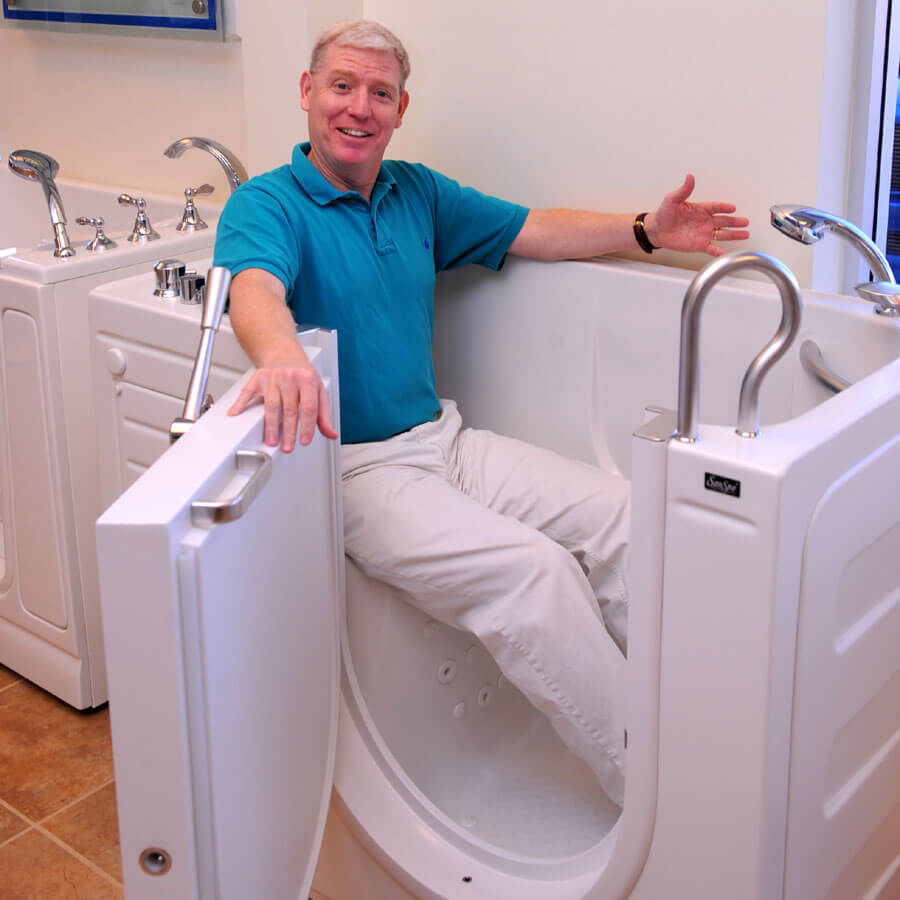When you think about it, standard bathtubs don’t have the easiest design for people with limited mobility or physical challenges. Stepping over the side to get into the tub can be difficult enough, but balancing and contending with slippery bathtub surfaces can turn what should be a pleasant experience – relaxing in the tub – into something quite risky.
Walk-in tubs or “accessible bathtubs”, as they’re sometimes called, offer an excellent solution and help to make bath time something that people with physical limitations can truly enjoy.

Benefits Of A Walk-In Tub
The benefits of accessible tubs for people with limited mobility and physical challenges are many.
Safety
Walk-in tubs remove the need to step over the side of a bath or perform any balancing maneuvers to get in and out. Instead, you open the door at the side of the tub and step right in – it couldn’t be easier.
Peace Of Mind
People who care for others with disabilities often worry that the person they’re caring for will be safe in the bathroom. A simple handrail by the side of the bath is not always sufficient to give a person with limited mobility the assistance they need when entering a standard tub. Walk-in tubs solve this problem and allow care providers to worry less and have more peace of mind.
Dignity
Many people with limited mobility or disabilities prefer to bathe alone. Walk-in bathtubs provide the independence they need to retain their dignity, enabling them to wash and carry on with their routine independently.
Why A Walk-In Tub Would Be The Right Solution
If you or someone you know is having difficulties getting in and out of a regular bathtub, then a walk-in bath provides the perfect solution. Not only can a person enjoy greater independence, but they can also do so much more safety than with a traditional bathtub.
The side of a traditional tub can sometimes be as much as 20 inches off the floor, meaning that it can be a significant effort and risk just to step into the bath. Walk-in tubs provide not only a door and a non-slip surface underfoot, but also seating, allowing a person with limited mobility the option of sitting in a regular position while they bathe, rather than having to do anything which might feel awkward or uncomfortable. Many walk-in tubs come with a hand-held sprayer so washing your hair can be done while seated.
Types Of Walk-In Tubs And Cost Considerations.
Different walk-in tubs come with varying features. For instance, many come with differently-shaped doors. Some doors are U-shaped, while others are more V-shaped, depending on the model you buy. All walk-in tubs, however, have special seals around the doors which prevent water from spilling out into the rest of the bathroom.
Prices of walk-in tubs can vary quite a bit, depending on quality and brand. Most entry-level tubs with minimal features start around $2,500, but they can go all the way up to as much as $10,000 with all the features and material. Top-end tubs tend to come with things like water jet options, digital temperature control, and even custom lighting.
















This is a comment for this post.